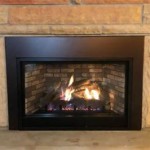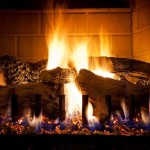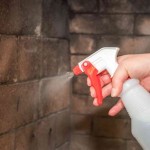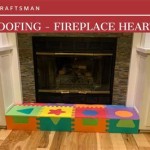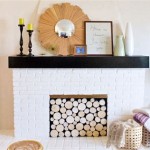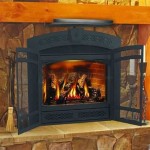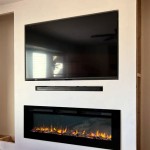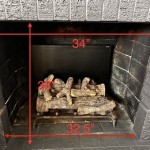How To Make Your Wood Burning Fireplace More Efficient
Wood-burning fireplaces, while aesthetically pleasing and providing a traditional heat source, are often inefficient, with a significant portion of heat escaping up the chimney. However, several strategies can be employed to increase their efficiency, maximizing heat output and reducing fuel consumption. Implementing these methods can transform a fireplace from a decorative feature into a functional and cost-effective heating appliance.
The primary reason for fireplace inefficiency lies in the draft required for combustion. The hot air produced by the fire naturally rises and exits through the chimney, creating a vacuum that draws in cold air from the rest of the house. This influx of cold air offsets the heat generated by the fire, leading to a net loss of heat and potentially raising heating bills.
Ensure Proper Fireplace and Chimney Maintenance
Regular maintenance is paramount to fireplace efficiency. Creosote, a byproduct of wood combustion, accumulates inside the chimney. This substance is highly flammable and, if allowed to build up excessively, can lead to dangerous chimney fires. Annual chimney inspections and cleanings by a qualified professional are crucial for safety and optimal performance. A clean chimney provides a clear passage for combustion gases, ensuring proper airflow and reducing the risk of backdrafting, which forces smoke and harmful gases into the home.
Furthermore, inspect the fireplace damper regularly. The damper is a movable plate that seals the chimney opening when the fireplace is not in use. A damaged or improperly fitting damper allows heated air to escape during the winter and cool air to escape during the summer, increasing energy consumption. Replacing a damaged damper with a properly sealed model, such as a top-sealing damper, can significantly reduce heat loss. Top-sealing dampers provide a tighter seal than traditional throat dampers and are installed at the top of the chimney, preventing cold air from entering the chimney and the house.
Check the firebox for any cracks or deterioration. Damaged fireboxes can leak heat and compromise the structural integrity of the fireplace. Repairing any cracks or replacing damaged firebricks ensures proper heat reflection and prevents heat loss through the firebox walls.
Optimize Wood Selection and Burning Practices
The type and quality of wood used significantly impact fireplace efficiency. Seasoned wood, which has been air-dried for at least six months, burns hotter and cleaner than green or unseasoned wood. Seasoning reduces the moisture content of the wood, allowing it to ignite more easily and burn more completely. Green wood contains a high moisture content, which consumes energy as the water evaporates, resulting in lower heat output and increased smoke production. The increased smoke production contributes to creosote buildup in the chimney.
Hardwoods, such as oak, maple, and ash, are denser than softwoods, such as pine and fir, and therefore contain more energy per unit volume. Hardwoods burn longer and produce more heat than softwoods. When selecting wood, choose a variety that is appropriate for the fireplace size and burning needs. Smaller fireplaces may benefit from smaller pieces of hardwood, while larger fireplaces can accommodate larger logs.
Proper burning practices also contribute to efficiency. Build fires using the top-down method, where larger logs are placed at the bottom, followed by progressively smaller pieces of wood and kindling on top. This method allows for a more controlled and efficient burn, reducing smoke and maximizing heat output. Avoid overfilling the firebox, as this can restrict airflow and lead to incomplete combustion. Maintain a sufficient airflow to the fire by adjusting the damper or using andirons to elevate the wood.
Consider Fireplace Inserts and Accessories
Fireplace inserts are self-contained units that are installed inside an existing fireplace. These inserts are designed to significantly improve heating efficiency by trapping heat and radiating it into the room. They are typically made of cast iron or steel and feature a sealed combustion chamber, which reduces air leakage and maximizes heat output. Fireplace inserts can be powered by wood, gas, or electricity, offering a range of options to suit different needs and preferences.
Wood-burning fireplace inserts are highly efficient, often achieving efficiencies of 70% or higher, compared to the 10-20% efficiency of traditional open fireplaces. They also produce less smoke and emissions, making them a more environmentally friendly option. Installing a fireplace insert requires professional installation to ensure proper venting and safety.
Various accessories can further enhance fireplace efficiency. Fireplace grates elevate the wood, allowing for better airflow and more complete combustion. Glass doors enclose the firebox, reducing drafts and preventing heat from escaping up the chimney. Heat-circulating fans can be installed to circulate warm air from the fireplace into the room, distributing heat more evenly and increasing overall heating efficiency. These fans can be either free-standing or built into the fireplace insert.
By diligently pursuing these methods, homeowners can significantly enhance the efficiency of their wood-burning fireplaces. These methods not only result in increased heat output and reduced fuel consumption but also contribute to a safer and more environmentally responsible heating practice.

How Can I Make My Traditional Masonry Fireplace More Efficient

How To Make Your Fireplace More Efficient

How To Improve Your Wood Stove S Efficiency

How Can I Turn My Fireplace Into A Super Efficient Heat Source

Fireplace Inserts 5 Money Saving Benefits Efficient Heating

How To Make Your Fireplace More Energy Efficient Quadra Fire

3 Ways I Improved Wood Stove Heating

Keys To Make Your Wood Stove More Efficient Panadero

How To Increase The Efficiency Of Your Woodburning Stove

How To Build A Long Lasting Fire Fiveways Fires Stoves
Related Posts

